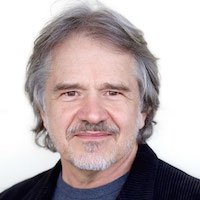
My students and I are learning about Qigong and physiology in the context of connective tissue.
We have been working with a Chinese Qigong master who practices the healing arts. As a result, I wanted to share some of what we have learned.
Firstly, let’s look at connective tissue or sinew.
If you look up the word sinew in the dictionary, it’s definition is closely linked to tendon. The dictionary indicates that this word is not used much anymore. However, I believe that the way the word was originally used describes the meaning that I want to convey, so I will use it in this article.
Sinew includes all the different connective tissue between the muscles and the bones. It includes fascia that is around the muscles, between the muscles, and the fascial fibers that run through the muscles. It includes the periosteum around the bone and all the connective tissue that connects bone to bone, and bone to muscle. It’s an elaborate and extensive network.
So, if the sinew—connective tissue—is healthy, pliable, and functioning well, then the muscles and the bones are healthy.
We can view muscle like a sack of jelly or fluid (even water). It is the sinew that gives them their shape and tone. You can massage the muscle and relax the muscle, but if the sinew isn’t right, then the muscle just tightens back up.
The bones, on the other hand, are more like sacks of wet sand. There is a lot of pliability and movement in them. Bones are composed of collagen and contain crystals, like calcium phosphate and calcium carbonate. When the body moves and the sinew is flexible and functioning properly, it puts different degrees of imposition and compression upon the bone. So, when the body is in a relaxed state, the bone is also in a relaxed state.
If there is an impact on the bones, the sinew can tighten, and the bone tightens and becomes like a geodesic dome—a crystalline structure that is solid and strong.
The idea behind Qigong, Kung Fu, and other Chinese healing techniques is that the focus of bodywork and exercise is not on the muscle, but instead on the connective tissue. These practices free up the connective tissue to make it pliable and healthy.
In different places in the body, the sinew builds up, and where it builds up, energy becomes blocked. Qigong bodywork can be quite painful because practitioners dig into deep, congested, and hard-to-get-to areas that are oftentimes tender, even if you push on them lightly. For health, flexibility, and keeping the tissues alive and youthful, we have to get those areas opened up. I believe it is a life-changing process to have this done. Once everything is opened up, the whole physiology transforms.
When I first had Qigong bodywork, I wanted to figure out how it worked because it was like nothing I had ever experienced before. When I spoke about this with healers, bodyworkers, or people who have experienced deep-tissue massage, many of them said, “Oh yes, myofascial release.”
I have had many different bodyworkers giving me myofascial release. Those treatments were nothing like what the Chinese Qigong master did.
In the West, when we think of massage, we think of getting our muscles massaged. Experiencing the Chinese Qigong master’s work, it seemed the muscles were almost in the way, or just something he could grab onto to get to the sinew. For instance, he pushed and pulled on the muscle to open the sinew, rather than to massage the muscle itself.
If the sinew is healthy, the muscles are healthy. If you try to make the muscles healthy without tending to the sinew, the muscles tighten up and there is no long-term healing.
During Qigong bodywork, I noticed that the focus was primarily on how the energy travelled from the head and spine to the rest of the body. The master was actively working with the tissue that is connected to the nervous system. There was much less emphasis on the peripheral parts of the body.
The integration of muscles, bones, and sinew, with the nerves and the brain, is a crucial component that is largely overlooked in the West. What has contributed to this disconnect is the fact that the original meaning of the word sinew has become lost to the extent that it now means tendon.
This interesting discovery process also extended to a number of Chinese exercises—ancient Chinese Qigong exercise for health called Ba Duan Jin—including Eight Brocades. Over time, Ayurveda became distorted in China. Secrets were kept, and substitutions were made for one reason or another.
Similarly, there were different approaches to various art forms. Some of them were healing arts, some were the martial arts, and they crossed over and became blurred over the course of time. Resultingly, some of the exercises that you might do in the name of health are more for martial arts, and vice versa. Ba Duan Jin is clearly intended for healing, and it gets the energy moving through the sinews.
Wouldn’t it be interesting if our emphasis on exercise changed from being about muscles to being about the sinew?
It would be beneficial if our relationship with massage and bodywork went from being about getting the muscles to relax, to being about opening up the connective tissue.
This could, in a short period of time, significantly transform how we attain soundness of body and achieve good health.
~
Author: Dr. Michael Mamas
Image: Author’s Own/Pixoto
Editor: Lieselle Davidson


 Share on bsky
Share on bsky




Read 0 comments and reply